You may have noticed that, as a society, we’ve developed a bit of an obsession with disinfectant wipes. They are so convenient an available that we seem to have forgotten what they really are … antimicrobial pesticides. This post will discuss the dangers of disinfectant wipes, when you really need to disinfect and some of the best non-toxic disinfectant wipes.
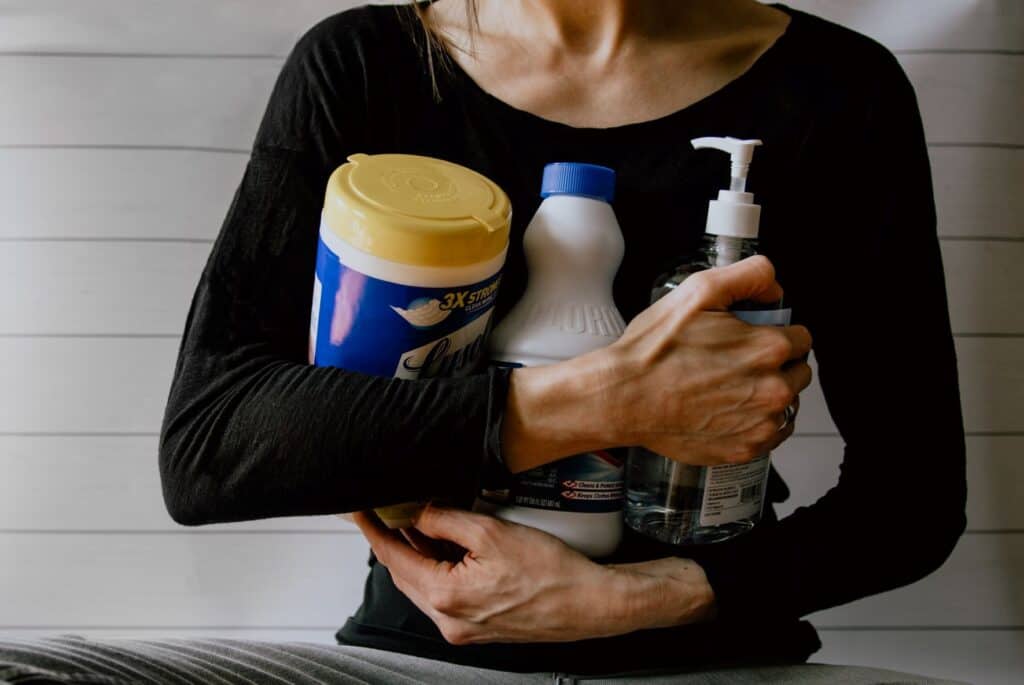
The biggest problem with disinfectant wipes is their overuse. I’ve seen them used to clean up everything from ketchup to art messes and everything in between,
15 years ago, if the kids finished their snack and left crumbs behind, we wouldn’t reach for the ammonia, would we? What about to clean up an art mess left behind or a spill on the counter? We’d just grab a rag and maybe some dish soap, right?
Today, many people use disinfecting wipes as a catch all for anything that needs to be wiped up. Schools, businesses, libraries and churches have them on stockpile and use them for whatever need pops up. Again, we wouldn’t whip out the bleach or ammonia with people all around, but we don’t hesitate to use a wipe (or 5) in the middle of a crowd or in a small unventilated space.
Ingredients in Common Disinfecting Wipes
Let’s take a look at some common disinfecting wipe ingredients. The main ingredient in Lysol Disinfecting Wipes, Lemon & Lime Blossom is Alkyl Dimethyl Benzyl Ammonium Chlorides (C12-16), which scores an F from the Environmental Working Group (EWG).
They also contains Myristalkonium Saccharinate, which scores a D from the EWG. The last problematic ingredient is fragrance. The offenses of these ingredients include respiratory hazard, allergen/skin irritant and endocrine disruptor.
Let’s take a look at Clorox Disinfecting Wipes, Lemon Fresh. The ingredients are similar with the addition of Alkyl Dimethyl Ethylbenzyl Ammonium Chlorides (C12-18) (EWG score D) and Isopropyl Alcohol a less toxic skin/allergy irritant. I think it’s important to note that the wipes marketed as “commercial” or “germicidal” contain even more harsh ingredients.
Clorox offers a “free and clear” version, which contain ingredients like dimethicone, methylisothiazolinone, octylisothiazolinone, which all have an EWG rating of D. While these ingredients may be ever so slightly less hazardous to people, they are still noteworthy concern and equally hazardous to the environment.
So, don’t be fooled by marketing here … not much about this product is “free and clear.”
Dangers of Common Disinfecting Wipes
We’ve already covered the toxic ingredients and their effects on the body, now let’s dive deeper and look at other downsides of disinfectant wipes.
Frequent disinfecting creates superbugs that are harder to kill. One Australia study looked at infection rates before and after increasing the number of hand sanitizing dispensers in hospitals. Some infections actually went up as the bacteria stains became resistant to the disinfectant used in the hand sanitizer.
Disinfectants negatively affect indoor air quality. This is why choosing safer products, opening windows and leaving the environment for a period of time after disinfecting is essential. Air fresheners are also big culprits in polluting our indoor air.
I read a cool quote once that went something like “the smell of clean is actually no smell at all!” Yes!
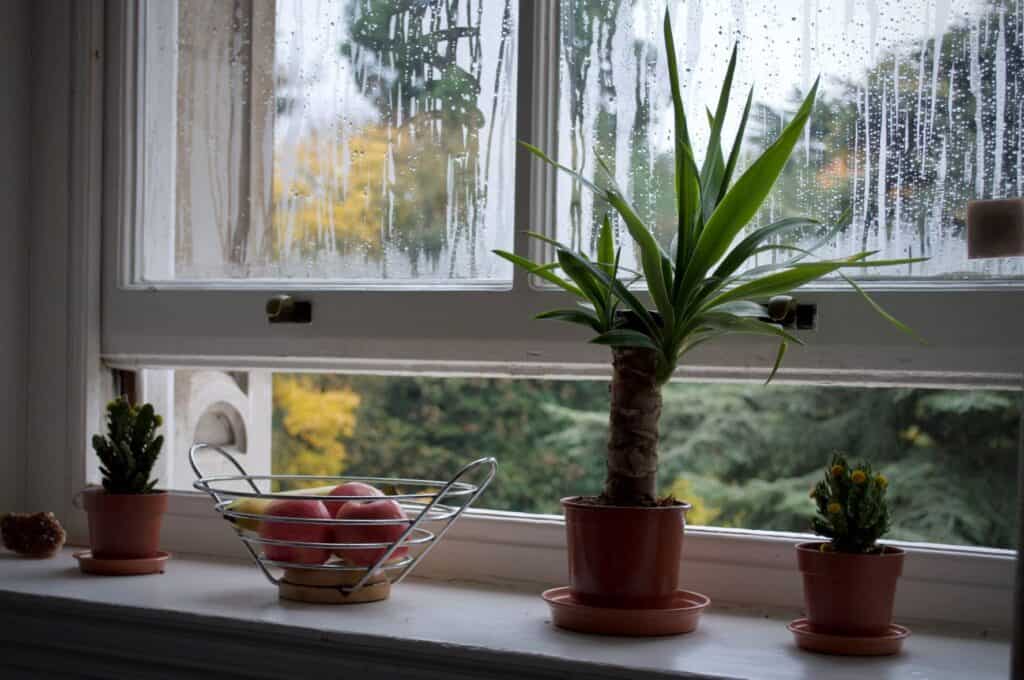
Anything that is toxic to humans is typically toxic to wildlife and the environment as well. We know the large-scale use of disinfectants against Covid-19 posed a risk to the wildlife, but it doesn’t take a pandemic to pollute the environment. It happens daily. These toxins seep into our land, rivers and air when we make them, use them and dispose of them.
When do you really need to disinfect?
I think this is the most vital question we can ask. Disinfectant wipes have their place and their purpose and even at least one positive element. For example, when it comes to safety, they definitely beat out any aerosol disinfectant spray. Aerosol disinfectants present a huge inhalation risk and since disinfecting is the new smoking (check out that study!) this is definitely worth noting.
The advice on when and where to disinfect varies based on who you ask and where you live. The Netherlands healthcare system, for example, strongly warned against frequent disinfecting even during the peak of Covid. The WHO and U.S. CDC recommend disinfecting surfaces in contact with raw meat, bodily fluids as well as disinfecting high touchpoints when there is a virus outbreak (i.e. flu season, recent pandemic).
The part that is frequently forgotten is the safety recommendations offered alongside the disinfecting guidelines. For example, these sources recommend opening windows to allow ventilation, not giving disinfectant products to children or even using them near children, wearing gloves, washing hands after use and even rinsing certain surfaces. Unfortunately these warnings are completely unknown to the average person especially when it comes to disinfectant wipes.
When does product marketing say you need to disinfect?
Well, all the time and everywhere, of course! I remember a troubling commercial from a few years back where a dad sprays the sofa pillow with disinfectant spray, because his daughter has a little cough and a few minutes later the daughter is shown napping on the pillow. Eeek, nothing says healing a respiratory issue quite like napping in fumes that are, in fact, toxic to the lungs.
There was another where the dad jumps across the living room to grab a ball that was coughed on and disinfect it while his child is still playing with it. Both of these commercials actually go against the safety recommendations of health organizations and the product safety label. Disinfecting for every little sniffle in your own home is futile, exhausting and unsafe.
The majority of the time you disinfect inside your own home, you simply kill germs that you have already been exposed to or everyday germs that are harmless. And, if not done very carefully, you add additional burden to your respiratory system. Later in this post, we’ll cover some non-toxic cleaning options for times when you may truly need to disinfect.
How long are germs contagious on surfaces?
Prior to Covid-19, data was pretty clear and consistent, showing up to two hours on soft surfaces and under 24 hours on hard surfaces. This is your basic cold/flu germs. Note the wording of this section—”how long are germs contagious?” Not “how long can traces be found” or “how long can germs be detected,” etc. The latter phrases are used to evoke fear, get clicks or convince you to buy a product. If germs are not strong enough to infect someone then how long they are detectable is a moot point.
Most experts agree COVID-19 germs follow a similar timeline. We learned during the pandemic that COVID rarely spread via surfaces. Here is a journal article, Exaggerated risk of transmission of COVID-19 by fomites, that looks realistically at COVID-19 germ survival on surfaces.
I share this to say, I don’t think our need to disinfect surfaces has changed especially now that life has settled back down for the majority of us.
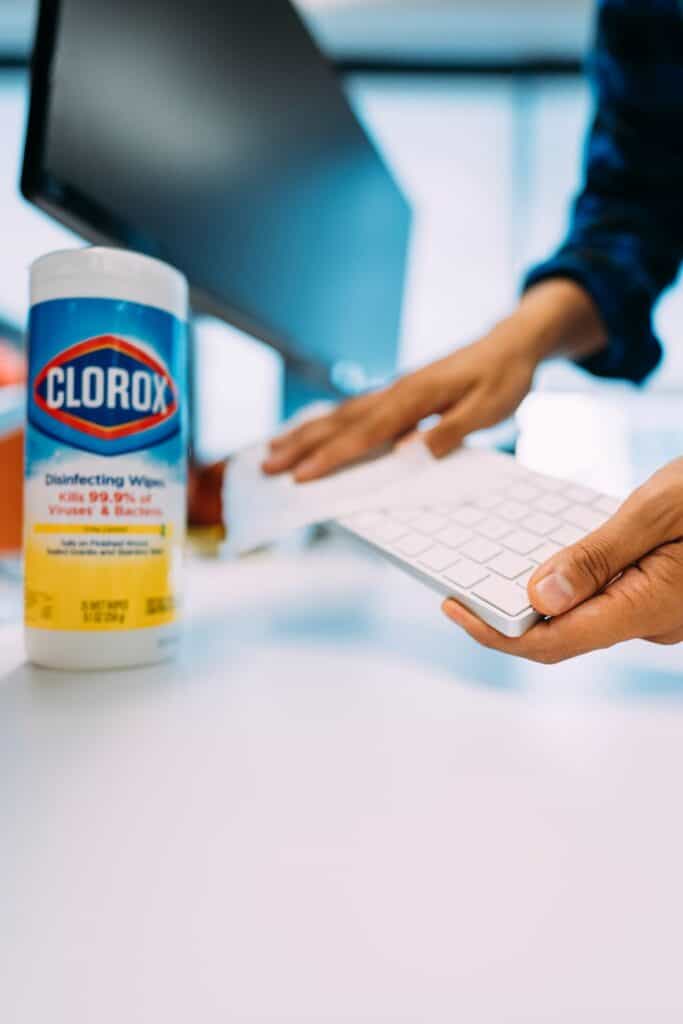
Are there exceptions? Yes, but they are rarely found outside of the healthcare setting. This is why healthcare settings have a completely different set of rules for cleaning and disinfecting. MRSA, methicillin-resistant staphylococcus aureus, is a bacterium that can be contagious on surfaces for a month of more.
Thankfully, it is not too common to come in contact with MRSA at school, work or the grocery store.
As most of us know, viruses are usually spread person to person rather than via surfaces. This is why it’s important to put in the work building our immune system rather than relying on disinfecting. While you can catch something from a surface, catching it from the person who touches the surface is much more likely.
How long does product marketing say germs are contagious on surfaces?
Forever, just to be safe! Ha! Marketing teams use headlines like the ones mentioned above to make it seem like germs are dangerous and scary for a really, really long time. Be sure not to get your disinfecting advice from a marketing/sales campaign.
The campaign has one job—to convince you that you need what it is promoting. It is not a marketing team’s job to protect your health or even tell you the whole story.
Do disinfectant wipes work how we think?
Did you know that in order to kill most bacteria the surface has to remain wet for FOUR to TEN minutes? Yep, that’s right. How often have you seen someone use a disinfect wipe to saturate a surface for four to 10 minutes or even one minute for that matter?
Each virus/bacterium has its own shelf life. I wonder how often a quick wipe kills more than soap and water or vinegar scrub would? The process is quick and convenient, but does it really do what we think it does?
Children and Disinfecting Wipes
Health and safety agencies are clear on this and the product labels are clear on this yet it’s a daily practice to let kids use or be near disinfectant wipes in countless school and childcare settings. The EPA confirms children should never use disinfectants including disinfectant wipes.
In addition, the EPA and other health agencies suggest disinfectants should only be used when children are not present and won’t be present before the residue is completely dry and the odor is gone.
How to Do Non-Toxic Basic Cleaning
There are many great non-toxic cleaning options. Basic cleaning still kills the majority of germs or washes them away. Cleaning is the way to go unless there is an active, serious virus, bodily fluids or raw meat.
My favorite cleaning method is a spray bottle of vinegar. This can work for almost everything including windows and mirrors. It’s great for kitchen counters, sinks, etc.
Need a true disinfectant? Add a few drops of thyme oil to the solution, which is a proven/registered disinfectant under the name thymol. Thyme oil/thymol is considered safe for humans and the environment.
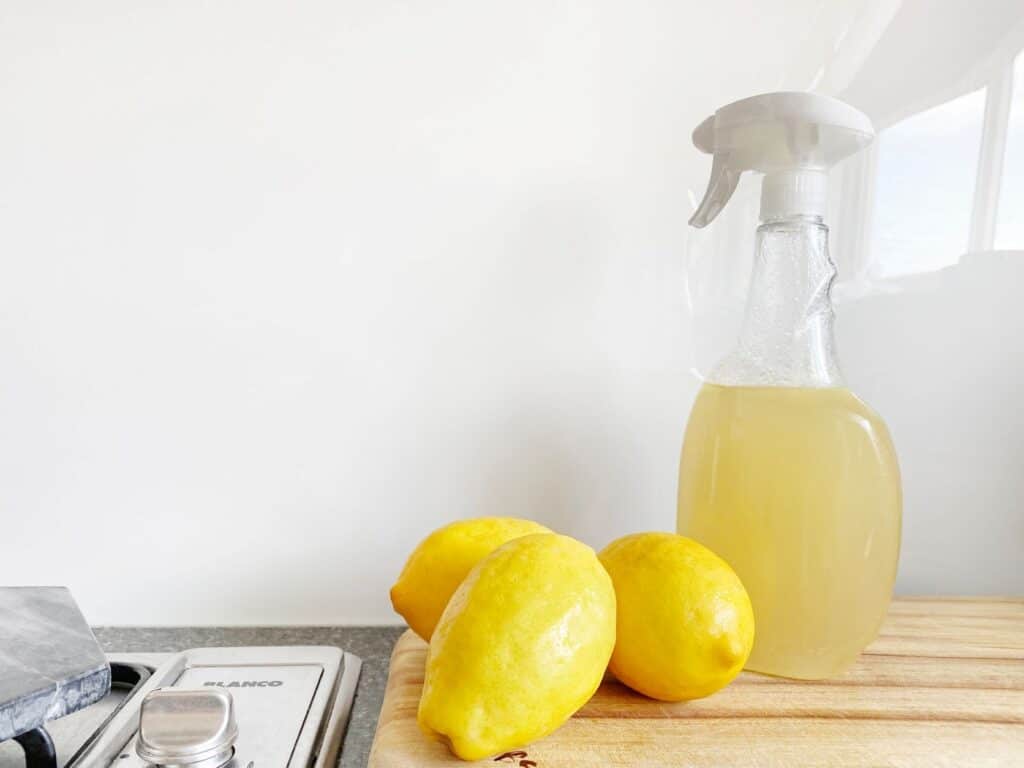
This post may contain affiliate links. I may earn a small commission for qualifying purchases.
Many people like e-cloths made by Norwex or similar companies. E-cloths work by removing the bacteria rather than killing it. You just rinse them water after each use and wash them well once per week. Microfiber is a microplastic so not perfect for Mother Earth but still tons better than most traditional options.
Hydrogen Peroxide is an excellent choice for killing germs. A 2018 study actually found it more effective at killing germs than ammonium chloride disinfectants, which includes most common disinfectants. Amazon carries 3% hydrogen peroxide in a spray bottle. A cheaper option is to just buy a large size and fill up an existing spray bottle.
They make higher concentrations of hydrogen peroxide but skip them as they can be problematic if inhaled. Check out What is Hydrogen Peroxide Good For? for tips on cleaning with HP. As with all spray cleaners, just be sure to spray it directly into a cloth rather than the air.
Hot water kills germs extremely well, but be careful with this option for obvious reasons! It needs to be 149° if you want to kill all the germs. Warm soapy water is another simple non-toxic cleaning option. Plain soap allows germs to be washed away like when we wash our hands. It can be really effective if done properly.
Be cautious of green cleaning products. Some are great, some are o.k. and some are nearly as bad as traditional cleaners. Check each one in the EWG database even if you know the brand. Formulas change and safety varies from product to product within a company. I like to keep it simple, so nothing beats my always-there gallon of vinegar in the cabinet. If you really love scents, you can always add in some orange or lemon peels.
Best Non-toxic Disinfectant Wipes?
There are times when you may need or want a disinfect wipe. Maybe there is a nasty stomach virus or flu in your home and you like the convenience of a wipe or maybe you are responsible for choosing a disinfectant wipe for your office or asked to provide disinfecting wipes for your child’s classroom.
Whatever the reason may be, if you need to purchase them, here are some of the best non-toxic disinfectant wipes for a safer clean.
Seventh Generation Disinfecting Multi-Surface Wipes, Lemongrass Citrus
These Seventh Generation disinfecting wipes have been my choice when I have been asked to provide a disinfectant wipe for school or similar. It kills 99.9 of germs just like Lysol and Clorox wipes. It is undoubtedly more expensive, but I’m personally happy to pay more for a safer product.
The cost can easily be offset by reducing the amount of disinfecting. It has an EWG rating of A. The key ingredient in these is thymol, which comes from thyme essential oil. As mentioned earlier, you can keep a bottle of thyme essential oil on hand at home if I ever need to disinfect for any reason.
You can simply add a few drops to a homemade vinegar spray, and you are good to go. This is a much cheaper method for disinfecting than buying the wipes, but it may not work for all settings.
Arm & Hammer Essentials Disinfecting Wipes, Lemon Orchard Scent
These Arm & Hammer disinfecting wipes are new to me, but they are absolutely a step in the right direction. They earn a rating of B from the EWG. Not too shabby! Considering you get twice as many wipes per container, these end up being cheaper than the Seventh Generation wipes if you buy them in bulk.
These also kill 99.9% of germs and meet the EPA’s criteria for use against virus and bacteria. They do contain synthetic fragrance unfortunately.
Clorox Plant-Based Disinfecting Wipes, Lemon
Clorox plant-based wipes are also a new discovery to me while researching for this blog post. They do not yet have an EWG rating, so I am hesitant to recommend them. The label says they use citric acid to kill 99.9% of germs. They do likely contain fragrance but are likely a much safer option than traditional wipes.
As far as true disinfecting wipes go, I feel like the Seventh Generation wipes are the best option available but each year this category grows, so hopefully there will be even more on the market when I refresh this post for next school year.
Detoxing your home? Check out my post The Dangers of Synthetic Fragrances.
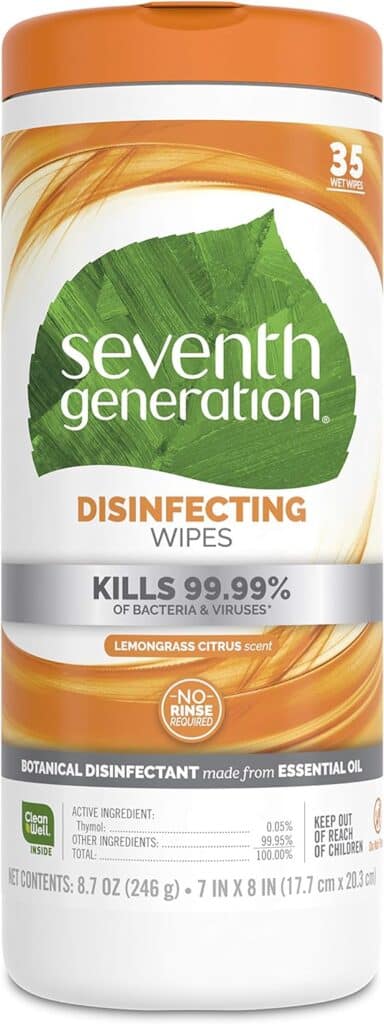
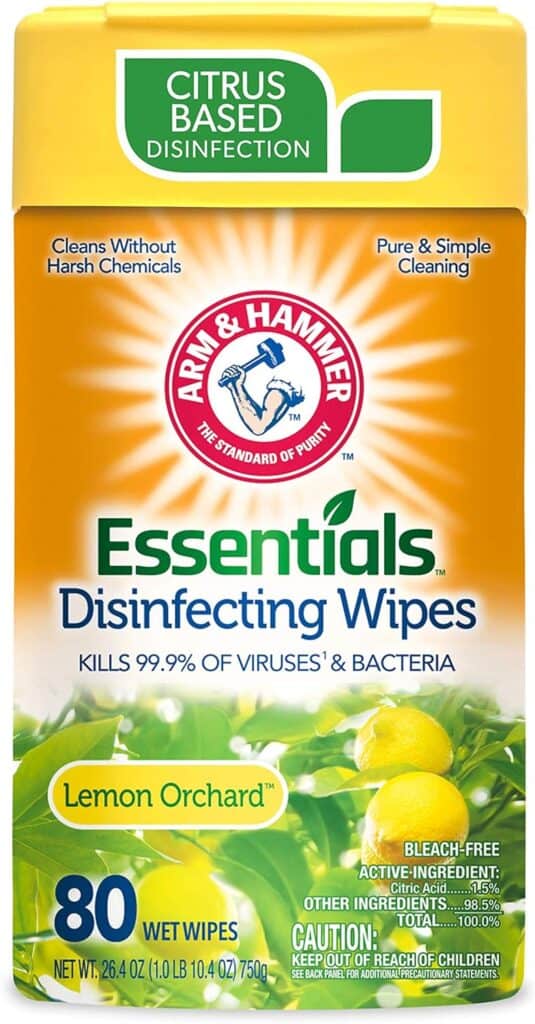
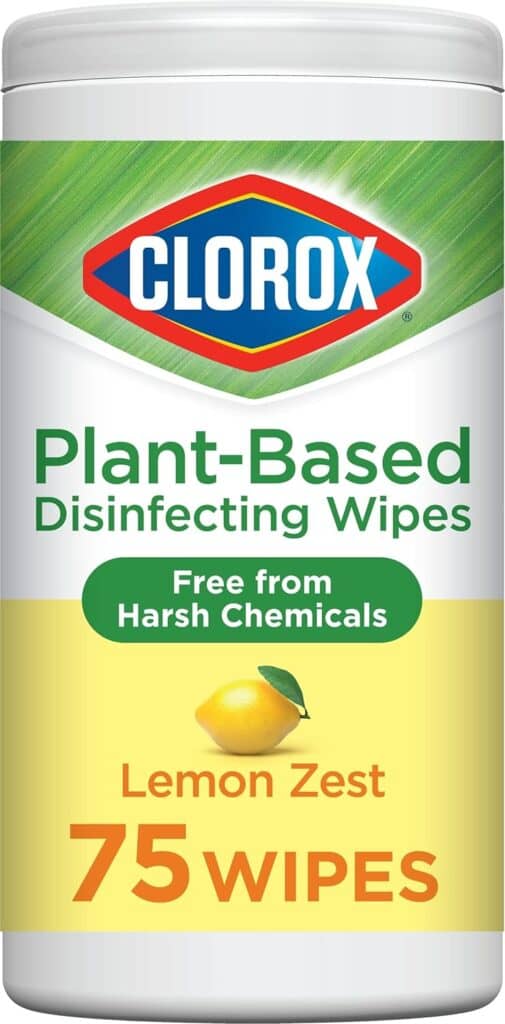
So much great information here! I feel so much better informed!